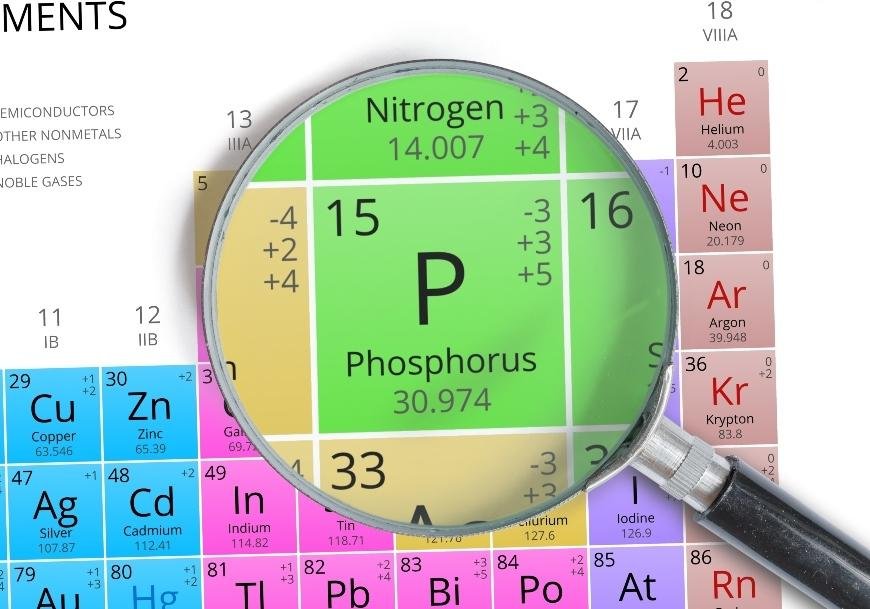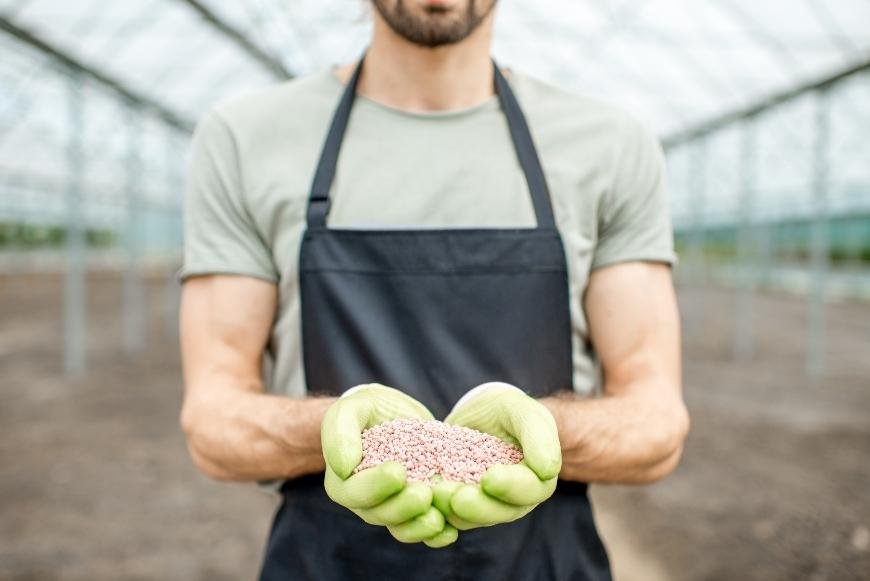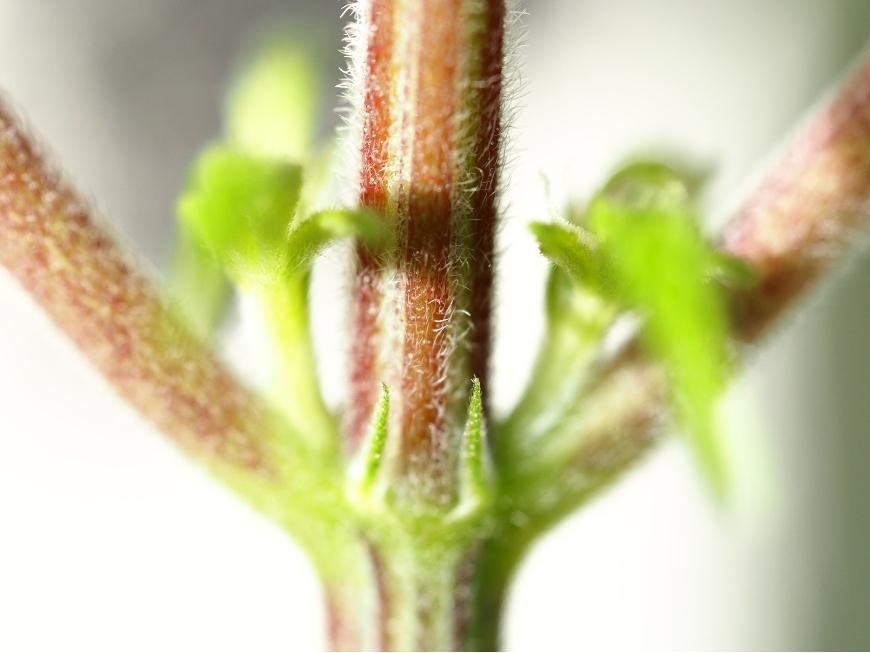Phosphorus for Cannabis Plants
Learn about Phosphorus for Cannabis Plants: its role in metabolism, diagnosing deficiencies, and maintaining ideal levels during growth stages.

Phosphorus is an indispensable nutrient for cannabis plants, having a major influence on their overall health and growth. As a vital component of plant metabolism, phosphorus contributes to various processes such as energy production, cell division, and nutrient uptake. In this blog post, we will delve into the importance of phosphorus for marijuana plants and explore its role in promoting optimal growth.
We'll begin by defining what phosphorus is and discussing its function within the complex network of plant metabolic processes. Next, we'll identify symptoms associated with phosphorus deficiency in cannabis plants and provide guidance on diagnosing and treating these deficiencies effectively. Additionally, we will outline ideal phosphorus levels during different stages of growth to ensure your cannabis plants thrive throughout their lifecycle.
By understanding the significance of phosphorus for cannabis plants and maintaining proper levels within your growing medium, you can significantly improve the health and yield potential of your marijuana crop.
Table Of Contents:
- What is Phosphorus?
- Role of Phosphorus in Plant Metabolism
- Sources of Phosphorus
- Symptoms of Phosphorus Deficiency in Cannabis Plants
- Diagnosing and Treating Phosphorus Deficiencies in Cannabis Plants
- Ideal Phosphorus Levels for Cannabis Cultivation During Different Stages of Growth
- FAQs in Relation to Phosphorus for Cannabis Plants
- Conclusion
What is Phosphorus?
This vital element helps to build strong root systems, develop flower buds, and maintain healthy plant metabolism. In this section, we'll discuss the definition of phosphorus, its role in plant metabolism, and various sources of phosphorus for your marijuana plants. Phosphorus is a chemical element with the symbol P on the periodic table. Plants necessitate three key nutrients - nitrogen, potassium and phosphorus - to flourish and yield abundant crops. Cannabis plants absorb phosphorous from their growing medium through their roots as phosphate ions.
Role of Phosphorus in Plant Metabolism
In plant metabolism, phosphorous plays several important roles that contribute to optimal growth:
- Phosphorus helps to produce ATP, which serves as a source of energy for the processes that take place during photosynthesis.
- Nucleic acid synthesis: Helps create DNA and RNA molecules necessary for cell division during plant development.
- Cell membrane formation: Contributes to creating stable cell membranes that protect cells from damage or stressors like pests or diseases.
- Nutrient uptake regulation: Assists with regulating how other nutrients are absorbed into cannabis plants' cells via transport proteins called ATPases which require phosphorus to function.
Sources of Phosphorus
There are various sources of phosphorous available for your cannabis plants, including:
- Fertilizers: Many commercial fertilizers contain phosphorous in the form of phosphate salts or organic compounds like bone meal and fish emulsion.
- Soil amendments: Adding materials such as rock phosphate, guano, or compost can increase the levels of phosphorous in your growing medium.
- Natural soil: Some soils naturally contain high levels of phosphorous; however, it's essential to test your soil before planting marijuana plants to ensure adequate nutrient availability and avoid potential deficiencies or toxicities due to imbalances.
Comprehending the part of phosphorus in plant physiology can assist cultivators to make sure their yields are thriving. Symptoms of phosphorus deficiency should be monitored to prevent any negative effects on the growth of the crop.

Symptoms of Phosphorus Deficiency in Cannabis Plants
Phosphorus deficiency can have a significant impact on the health and productivity of your cannabis plants. Identifying the symptoms early is crucial to ensure proper growth and development. In this section, we will discuss some common signs that indicate phosphorus deficiency in marijuana plants.
Stunted Growth
The first sign of phosphorus deficiency in cannabis plants is stunted growth. Without enough phosphorus taken up by the roots, a plant's development can be hindered, particularly in terms of root formation, stem expansion and leaf production. When there isn't enough phosphorus available for uptake by the plant's root system, it cannot grow properly or produce large amounts of biomass.
Yellowing Leaves
Another symptom associated with phosphorus deficiency is yellowing leaves, especially on older foliage near the base of the plant (lowest leaves). The yellowing typically starts at leaf tips and progresses inward toward leaf veins as nutrient lockout worsens due to an imbalance between nitrogen (N), potassium (K), and other essential nutrients like calcium (Ca) or magnesium (Mg). Eventually, these affected leaves may become necrotic; brownish-black patches appear before falling off entirely if left untreated.
Other Signs of Deficiency
- Purple or red stems: A lack of sufficient phosphorus can cause purple or red discoloration on stems due to anthocyanin accumulation, a pigment that gives plants their vibrant colors.
- Slow flowering: Phosphorus is crucial for the formation of flower buds, and a deficiency can lead to slow or stunted development during the flowering stage.
- Poor root growth: Since phosphorus plays an essential role in plant roots' development, deficient cannabis plants may exhibit weak or underdeveloped root systems that struggle to support proper nutrient uptake.
In addition to these symptoms, it's important to note that certain factors like incorrect pH levels and poor growing medium conditions can exacerbate phosphorus deficiencies by limiting nutrient availability. To learn more about diagnosing and treating phosphorus deficiencies in your cannabis plants, continue reading our next section on diagnosis and treatment options.
Phosphorus deficiency in cannabis plants can have serious implications on the health and yield of your crop, so it is important to identify any signs early. To ensure optimal growth and productivity, diagnosing and treating phosphorus deficiencies quickly is key.
Diagnosing and Treating Phosphorus Deficiencies in Cannabis Plants
Verifying if your cannabis plants are enduring a phosphorus insufficiency is essential in order to accurately diagnose the problem and implement corrective measures. In this section, we'll discuss how to test soil for nutrient levels, adjust fertilizer ratios and application rates, and add soil amendments to increase phosphorus levels.
Testing Soil for Nutrient Levels
To determine if your cannabis plants have a phosphorus deficiency, start by testing the soil's nutrient levels. You can purchase a home testing kit or send a sample of your soil to an agricultural lab for analysis. The results will reveal whether there is an imbalance in nutrients or other factors contributing to poor plant health.
Adjusting Fertilizer Ratios and Application Rates
If the test confirms low phosphorus levels in your soil, consider adjusting the ratio of nutrients in your fertilizer mix as well as their application rates during different stages of growth:
- Seedling stage: Use fertilizers with lower nitrogen (N) content but higher amounts of phosphorous (P) like N-P-K ratios such as 5-10-5 or 10-20-10.
- Vegetative stage: Gradually increase nitrogen while maintaining adequate P-levels using N-P-K ratios like 15-15-15 or similar balanced formulas.
- Flowering stage: Switch back to high-phosphorous fertilizers with reduced nitrogen content like N-P-K ratios around 5-15-10 or 2-8-4.
It's crucial to monitor your plants' response and adjust the application rates accordingly. Over-fertilizing can lead to nutrient burn, which may further damage your cannabis plants.
Adding Soil Amendments to Increase Phosphorus Levels
Besides adjusting fertilizer ratios, you can also increase phosphorus levels in the soil by incorporating phosphorous-rich amendments. Some options include:
- Bone meal: A slow-release organic source of phosphorous that promotes root growth and flowering.
- Rock phosphate: A natural mineral deposit containing high amounts of phosphorous, ideal for long-term soil improvement.
- Fish bone meal: Derived from fish bones, this amendment is rich in both phosphorous and calcium, essential nutrients for healthy plant development.
Incorporating these amendments into your growing medium will help restore optimal nutrient levels and improve overall plant health. However, always remember to follow recommended dosages on product labels and avoid over-application as it may cause more harm than good.
By accurately testing soil for nutrient levels, adjusting fertilizer ratios and application rates, and adding soil amendments to increase phosphorus levels when necessary, cannabis growers can effectively diagnose and treat any phosphorus deficiencies in their plants. Moving on from this topic, the ideal phosphorus levels for cannabis cultivation during different stages of growth will be discussed next.

Ideal Phosphorus Levels for Cannabis Cultivation During Different Stages of Growth
For optimal plant health and bud quality, it is critical to monitor phosphorus levels during each stage of cannabis cultivation. It is essential to maintain optimal phosphorus levels during each stage of growth to ensure your plants thrive and produce high-quality buds. In this section, we will discuss the ideal phosphorus levels for cannabis cultivation during different stages of growth.
Seedling Stage
The seedling stage is when your cannabis plant begins its journey from a tiny sprout to a mature plant with robust root systems and foliage. At this stage, it's important not to overwhelm young plants with excessive nutrients, including phosphorus. A balanced nutrient solution containing lower concentrations of nitrogen (N), phosphorous (P), and potassium (K) should be used at this time. Aim for an N-P-K ratio around 1-1-1 or slightly higher in nitrogen content.
Vegetative Stage
- Nitrogen: As your cannabis plant enters the vegetative stage, its demand for nitrogen increases as it focuses on developing lush green leaves that serve as energy factories through photosynthesis. Keep an eye on leaf coloration; healthy leaves should be dark green without any yellowing or browning edges.
- Phosphorous: While still essential during the vegetative phase, phosphorous requirements are relatively low compared to other macronutrients like nitrogen (source). A balanced N-P-K ratio of 3-1-2 or similar should suffice during this stage.
- Potassium: Potassium is vital for the overall health and development of your cannabis plant, as it plays a significant role in regulating water uptake and maintaining cell structure. Aim for an N-P-K ratio that includes slightly more potassium than phosphorous to ensure optimal growth during the vegetative phase.
Flowering Stage
The flowering stage is when your cannabis plants begin producing those precious buds you've been waiting for. During this critical period, phosphorus becomes even more important as it aids in bud formation and helps produce larger yields. The ideal nutrient solution at this time should have a higher concentration of both phosphorous (P) and potassium (K), with reduced nitrogen levels to prevent excessive foliage growth. An N-P-K ratio around 1-3-2 or similar would be suitable for most strains during the flowering stage.
Remember that each strain may have its unique nutrient requirements, so always monitor your plants' health closely throughout their life cycle. Adjust nutrient ratios accordingly based on visual cues like leaf coloration, growth rate, and overall vigor to ensure you're providing them with everything they need to thrive.
FAQs in Relation to Phosphorus for Cannabis Plants
What is a good source of phosphorus for cannabis?
Phosphorus is a necessary element for cannabis, aiding in photosynthesis, root expansion, blooming and seed production. A good source of phosphorus for cannabis can be found in organic fertilizers such as bone meal or rock phosphate. These fertilizers provide high levels of phosphorus which can help boost the plant's health and productivity. Additionally, some composts also contain adequate amounts of phosphorus that are beneficial to cannabis plants. It is important to note that too much phosphorus can lead to deficiencies in other nutrients so it should be applied judiciously according to the manufacturer’s instructions.
Does phosphorus increase bud size?
No, phosphorus does not increase bud size. Phosphorus is an essential nutrient for plant growth and development but its role in increasing bud size is limited. Though its contribution to increasing bud size is minimal compared with other nutrients such as nitrogen or potassium, phosphorus can help foster healthy root and stem growth which may lead to bigger buds. Therefore, while phosphorus may play a minor role in increasing bud size, it should not be relied upon as a primary factor when attempting to achieve larger buds.
Is too much phosphorus bad for cannabis?
Yes, too much phosphorus can be detrimental to cannabis growth. Phosphorus is a vital nutrient for plants, aiding in photosynthesis, energy storage, respiration and root growth; however, an overabundance of it can cause deficiencies in other essential nutrients like nitrogen or calcium and reduce yields due to inhibited flowering and fruit production. However, when there is too much phosphorus present in the soil it can lead to deficiencies in other nutrients like nitrogen or calcium that are necessary for proper plant health. Additionally, excessive amounts of phosphorus may result in a decrease in yields due to stunted flowering and fruit production. Therefore it's important to monitor your soil levels carefully and make sure they remain within the optimal range recommended by experts for cannabis cultivation success.
What does phosphorus deficiency look like on cannabis?
Phosphorus deficiency in cannabis can be identified by yellowing of the lower leaves, stunted growth and a decrease in flowering. The yellowing usually starts from the edges of the leaf and works its way inward. It may also cause some spots on older leaves that eventually turn brown or gray. If left untreated, phosphorus deficiency will lead to decreased yields and poor quality buds due to lack of nutrient uptake. To fix this issue, ensure your soil has adequate phosphorus levels through fertilizers or composts before planting your cannabis plants.
Conclusion
In conclusion, phosphorus is an essential nutrient for cannabis plants that helps them develop strong root systems and flower buds. It's vital to identify and address phosphorus shortages in cannabis plants so they can get the nutrients needed for healthy growth. Additionally, understanding ideal levels of phosphorus during different stages of growth can help you create a balanced environment for optimal plant health. With proper care and attention, providing adequate amounts of phosphorus for your cannabis plants will lead to healthier yields with better quality flowers.



























































































































